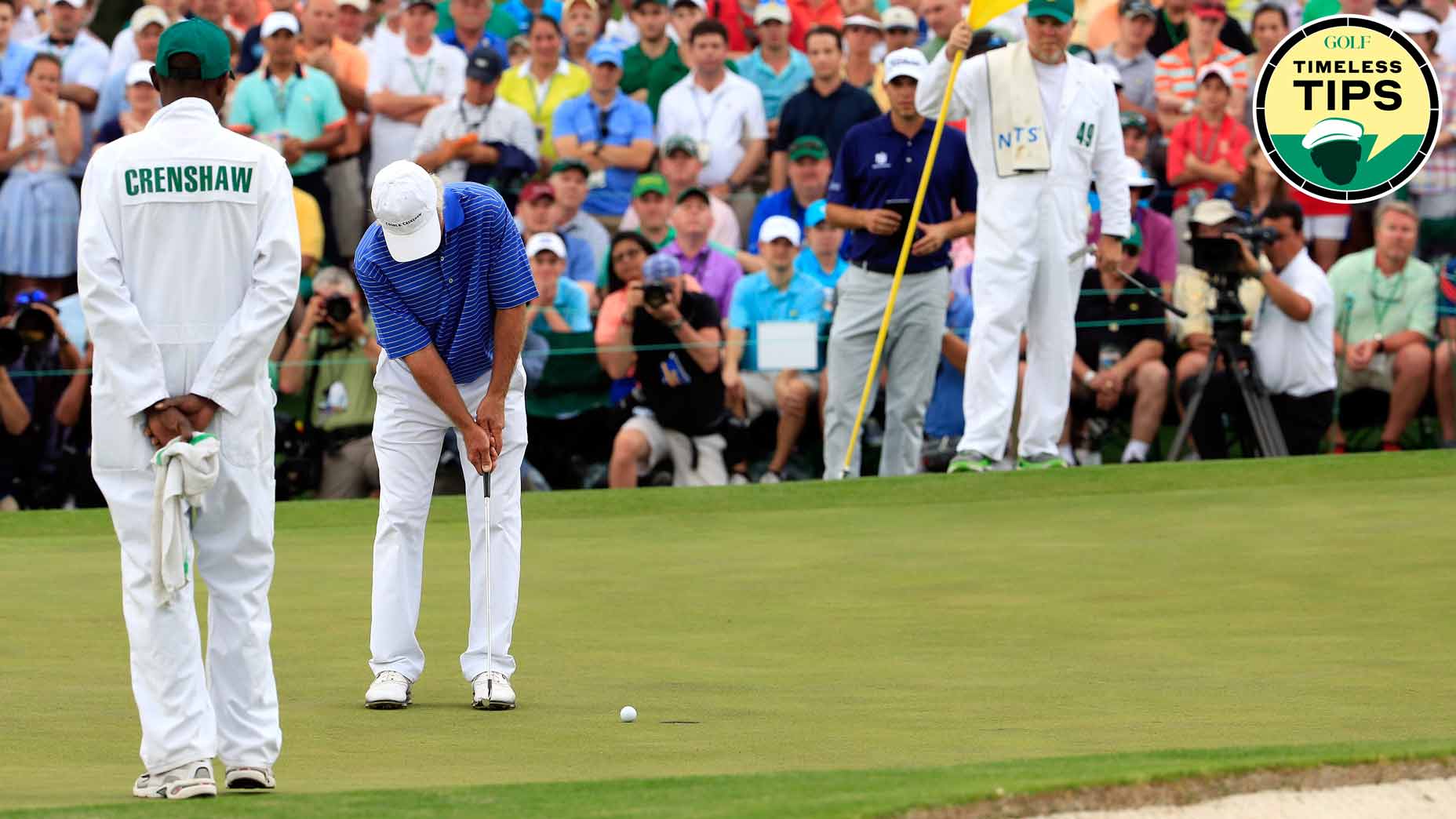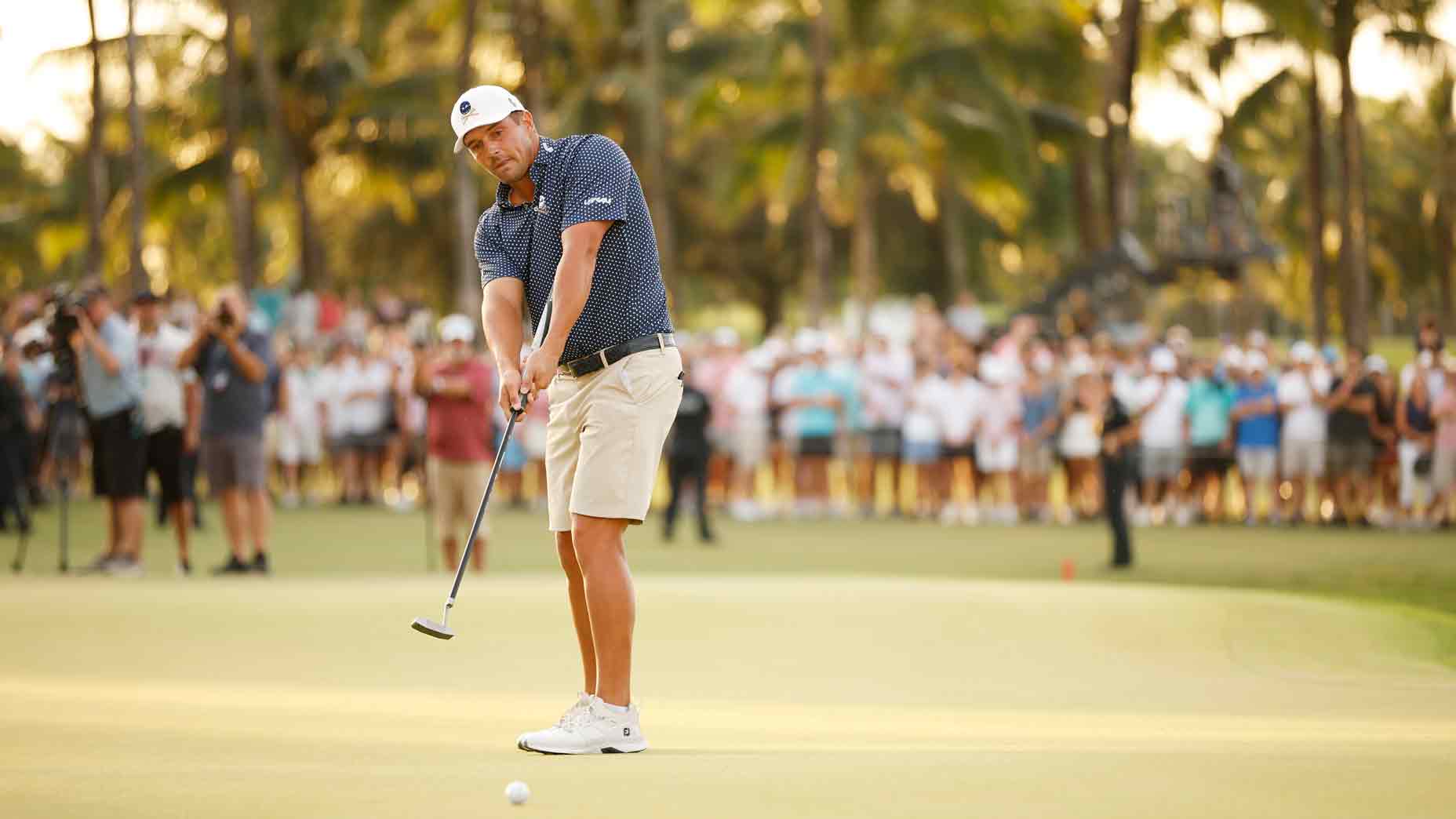Zephyr Melton

Ben Crenshaw is among the recreation’s all-time nice putters.
Getty Pictures
Golf instruction is ever-evolving, however the very best recommendation stands the check of time. In GOLF.com’s new collection, Timeless Ideas, we’re highlighting among the best recommendation lecturers and gamers have distributed within the pages of GOLF Journal. Immediately we revisit Ben Crenshaw’s placing suggestions from our January 1981 difficulty. For limitless entry to the total GOLF Journal digital archive, be a part of InsideGOLF right now; you’ll take pleasure in $140 of worth for under $39.99/yr.
Placing is an important ingredient of golf — and if you wish to grow to be an excellent participant, you’d higher learn to make it a power. Useless-eye putters can flip bogeys into pars, and pars into birdies. If you’re rolling the ball nicely on the greens, you’re by no means actually out of the opening.
Similar to within the full swing, everybody has their very own distinctive flare on the subject of placing. Some give attention to the mechanics of the stroke, whereas others rely extra on really feel. There’s no hard-and-fast rule for what you ought to do. All that issues is that you just really feel comfy over the ball.
Effectively, that’s principally true. Based on two-time Masters champ Ben Crenshaw, you need to use any type you need on the greens — however be certain your type suits inside these 5 “musts.”
5 placing ‘musts’, be Ben Crenshaw
If there’s one sure factor about placing, it’s that it’s a person enterprise. The nice putters have used each conceivable sort of grip, stance and stroke. They’ve used shoulder-and-arm strokes, with little or no wrist, very wristy strokes, and all the pieces between. They’ve used gradual, pendulum strokes and quick, shorter strokes, and once more, all the pieces in between.
Are there, then, any guidelines in any respect in placing? Sure, I feel there are. Though you’ve got nice latitude in constructing your type, it’s best to observe the rules I’ll spell out right here.
1. Hold your shoulders over the putt
Quite a lot of instruction in recent times says in impact that in placing your eyes ought to be over the ball. Nevertheless, nice putters similar to Isao Aoki and Fuzzy Zoeller have proved that it’s not a “should” — Aoki’s ball is far farther from his physique than a line vertically downward from his eyes. Zoeller putts the identical strategy to a lesser extent, and in checking myself, I’ve discovered that my eyes are barely “inside” the ball. What’s a “should” is to have the higher a part of your again kind of horizontal. This place offers you the swing path you want in placing. Though the putter will nonetheless swing to the within going again and again inside after impression, it is going to observe a path a lot nearer to “‘straight again and straight by means of’’ than should you had been to face as erectly as for a full shot. How a lot you lean over the ball is a private alternative, and varies from gamers similar to Jack Nicklaus and Hubert Inexperienced who crouch down, to golfers like myself who stand extra erect.
2. Putt such as you swing
I feel all the nice putters have handled the placing stroke as a miniature golf swing. They naturally shaped placing strokes that had the identical relative size, tempo and magnificence as their full swings. For instance. Billy Casper has a closed-to-open sort placing stroke; it’s pretty brief and has a brisk tempo. His full swings have the identical traits. However, I’ve an extended, extra deliberate stroke, with the putter face remaining sq. to the shoulders as I swing again and thru. My full swings have the identical traits. Tom Watson has a really quick tempo in his full swings and the identical tempo in his placing stroke. Then there’s Arnold Palmer — he virtually forces the ball into the opening on the inexperienced and he makes use of the identical methodology in his full swings. Essentially the most notable instance, maybe, was Bobby Locke. He aimed far to the correct of goal along with his full pictures after which hooked the ball again from a really closed stance. In placing, he additionally adopted a closed stance and hit the ball very a lot from inside to out. Some individuals swear he even hooked his putts!
To place the thought one other approach, it’s not a good suggestion to undertake a placing type that’s utterly totally different out of your full swings. If you happen to do, it could actually ‘‘leak’’ into your full swings with poor outcomes. For instance, if I had been to undertake Billy Casper’s type, | would possibly discover myself working the blade from closed to open in my full swings or simply plain swinging too “brief” and quick. That might be in opposition to my pure tendencies. Everybody has a tempo and timing that’s theirs naturally. If you happen to deviate from these, the stroke merely gained’t work. Equally nicely, I might be in serious trouble if I made a decision that I might emulate Locke’s closed alignment. Earlier than I knew it, I might be aiming to the correct of goal on my full pictures and snap hooking myself proper off the course!
The underside line is that you just’ve obtained to know your self. It is best to examine your individual psychological and bodily makeups and the traits of your full swing. Ask your self: Am I gradual and deliberate or fast and nervous? Do I’ve an extended or brief swing? Do I favor a sq. alignment or am I extra comfy barely open or closed? Do I swing the membership from open to closed, closed to open or preserve the membership sq.? Based mostly on the solutions to those questions, you may develop a technique of placing that’s suitable together with your full swing.
3. Hold your thumbs on high
There’s great freedom of alternative with regard to the placing grip. You should use the common overlap, reverse overlap, cross-handed, split-handed and so forth. However one attribute is widespread to just about each good placing grip—the thumbs lie straight down the highest of the grip. Most frequently this “thumbs on the highest” place is used as a result of the participant needs to maintain the palms going through one another in order that the fingers work collectively throughout the stroke. He finds it helps him preserve the clubface sq.. I do that myself. Nevertheless, even should you examine the great putters who flip the palms outward as Jack Nicklaus does (to cut back wristiness), you’ll nonetheless discover that the pads of their thumbs are on the highest of the grip. Why? As a result of with the thumbs on high you’ve got higher really feel — you may really feel the hit and information the putter extra simply.
Bryson DeChambeau says this 1 trick will assist all routine 3-putters
By:
Nick Dimengo
The thumbs of every hand are the “feelers.” If you happen to had been going to really feel the feel of some fabric, you’ll assist the fabric together with your forefinger, however really feel the fabric by rubbing it together with your thumb. If you happen to had been reaching into your pocket to take out a dime for an area name, your trusty thumb would distinguish between the dime and the opposite small change in your pocket. The thumb additionally performs the key function in writing and different delicate duties. In placing, the place one of many main necessities is contact, it is sensible to put the thumbs straight on high of the grip, in order that they will carry most really feel to the job at hand.
4. Guard in opposition to the three-putt
It’s apparent that every one good putters have repeating strokes, and that the contact that develops from that stroke is a significant factor of their success. Nevertheless, I feel there are two different elements that assist the great putter get down in two putts or much less virtually on a regular basis.
First, all good putters are adept at studying greens and understand how the assorted kinds of grasses, slopes and grains affect the putt. They’ve additionally skilled themselves to watch these particulars earlier than they strike the putt, not afterward with 20-20 hindsight. That’s why I feel it’s a good suggestion to follow studying putts on the follow inexperienced; it’s simply as vital as grooving your stroke. The opposite issue is the “lag versus cost” query. Most of the time, a superb putter will guard in opposition to a 3 putt by lagging the longer putts up across the gap, slightly than charging.
Bobby Jones and Bobby Locke had been “lag” putters of their day, and so is Nicklaus. I’m, too. As Jones stated: “The nice putter is solely the person who can preserve coming shut, inside a foot of the opening; he holes extra putts as a result of the better the quantity that come shut, the better quantity that may doubtless go in.”
Nevertheless, how does one clarify such daring putters as Palmer, Watson or Andy Bean, who constantly putt a number of toes previous the opening? I feel the reply lies in figuring out your self. If *‘come-backers” maintain no terror for you, if you recognize you can also make them, then you may afford to go for the opening. However should you’re not assured on brief putts, I feel you’ll be extra constant and gap extra putts, should you’re content material to go away the longer putts shut.
5. Keep regular
A last precept widespread to all superb putters of the trendy period is steadiness. They preserve the pinnacle and decrease physique nonetheless. And this is applicable whether or not they’re wrist putters, similar to Palmer, Casper and Doug Ford, or arm and shoulder putters, similar to Bob Charles and Watson. I fall within the “arm and shoulder” class, and I don’t allow any head or leg motion, even on lengthy putts. I simply lengthen the stroke to ship the ball a farther distance.
Nevertheless, I’ve to confess that one nice putter doesn’t match this image, and that was Bobby Jones. Jones putted from a really slim stance, and there was pronounced leg motion in Jones’ longer putts. And Jones himself stated he may really feel the leg motion in his placing stroke on the shortest putts, although this motion was not discernible from images. Jones merely believed that it’s best to allow leg actions to happen as wanted, however warned in opposition to extreme motion.
In essence, Jones putted in the identical vogue as he swung on full pictures, utilizing the entire physique, slightly than simply components of it. Which methodology do you have to use? Effectively, should you purchase the thought that the “greatest” methodology is the one which’s used mostly on the Tour, then I feel right now there’s little question that it’s best to use a ‘‘shoulder and arm’’ type, with no wrist or just a bit wrist. Nevertheless, should you can’t get any really feel or management out of this type, then experiment with a extra wristy type and even the Jones’ type.
Concerning the final type, I’ll add this thought: If you happen to attempt it, preserve your head regular over the ball. Jones by no means swayed in placing, and neither do you have to.

Zephyr Melton
Golf.com Editor
Zephyr Melton is an assistant editor for GOLF.com the place he spends his days running a blog, producing and enhancing. Previous to becoming a member of the group at GOLF, he attended the College of Texas adopted by stops with the Texas Golf Affiliation, Workforce USA, the Inexperienced Bay Packers and the PGA Tour. He assists on all issues instruction and covers novice and girls’s golf. He will be reached at zephyr_melton@golf.com.















